|
Bath time for a male Wilson's Warbler, February 18, 2023, Sweetwater Wetlands. Sweetwater Wetlands is one of Tucson's birding hotspots. Last fall, following a scheduled controlled burn of the wetlands last the ponds were dry but are now back up to their pre-burn levels. And, spring has arrived. The trees are in leaf, and birds are actively pairing up and building nests. Let's "see what shaking" at the wetlands! Wilson's SnipeCanon R6, RF 100-500 mm with 1.4x Ext. at 661 mm, f/9.0, 1/2000 sec., ISO 32,000, +1EV. Wilson's Snipe is a medium-sized pudgy shorebird in the Order Charadriiformes, Family Scolopacidae, Sandpipers and Allies. There are 34 members in this family in North America including Sandpipers, Godwit's, Turnstones, the Dunlin, and the close look-alike, the American Woodcock. Many shorebirds live well away from the shore, including the Wilson's Snipe, which breeds across the northern U.S. and Canada and winters in the southern U.S., Mexico, Central and South America. If you were taken in by a "snipe hunt" at summer camp, be assured that they really do exist! Wilson's Snipes, like American Woodcocks, are tough to spot due to their coloration that blends right into the habitat. The bird shown here has been hanging out at the wetlands this winter just west of the restrooms close to the entrance. Wilson's Snipes feed mainly on insect larvae, as well as mature insects and snails, crustaceans, and worms. They have a long flexible bill that allows them to probe for food in wet soil and swallow small prey without having to pull their bills out of the mud. In the image above we can see the markings on the head. Below our subject takes a rest from his/her morning breakfast. We can see how well the bird's markings and coloration works as camouflage. The flanks of the bird in the image below almost looks like eyes of a larger animal, a useful ruse to discourage predators. For the photo geeks: This location at the wetlands is a tough spot for photos. Most of the activity is in the morning when the sun is low and to the left of the frame. The area is heavily shaded, making it great cover for the birds, but not ideal for photography. I shot these frames at 1/2000 sec to capture motion in the bathing birds, which gave me ISO's in the 30,000 range. And, contrast was limited. Post production processing with Adobe Photoshop Lightroom and Topaz DeNoise AI, which really saves photos like these. For those readers who follow this blog, you may recall the American Woodcock I caught on camera in NW Ohio last spring, NW Ohio Spring Migration 2022, Part 4: Not all birds migrate! I am including a photo from that post here to show the striking similarity to the Wilson's Snipe. American Woodcock, Oak Openings, Toledo, Ohio, May 2022. Wilson's WarblerCanon R6, RF 100-500 mm with 1.4x Ext. at 700 mm, f/10.0, 1/2000 sec., ISO 25,600, +2/3EV. In almost the same spot as the Wilson's Snipe I spotted this Wilson's Warbler taking his morning bath. Wilson's Warblers winter in Mexico and Central America and breed in the Pacific Northwest and Canada, with Arizona being in their migration territory. The statistics from eBird tend to back this up. The bird we see here is likely working his way north, and has stopped for food and a bath. The males have a very distinctive black cap on a yellow body, clearly seen here. Below, he gets ready to take the plunge! This looks like fun, I hope the birds enjoy it! Bathing and preening are a very important ritual for all birds. In the absence of water, certain breeds, such as the Gambel's Quail, will take "dirt baths" to help absorb dirt, oil, and parasites, which can then be removed with preening. Below, our Wilson's Warbler begins to look more like Ernie's Rubber Duckie, with a black cap of course! Two "Wilson's" bathing in the same pond? That raises the question . . . . Who was Wilson?
With the help of subscribers he published the nine-volume American Ornithology (1808-1814). Wilson's illustrations of birds in poses were an inspiration for James Audubon and other illustrators and naturalists. Orange-crowned WarblerCanon R6, RF 100-500 mm with 1.4x Ext. at 508 mm, f/9.0, 1/2000 sec., ISO 2000, +2/3 EV. Next in line for a bath was an Orange-crowned Warbler, shown here in drier circumstances hunting for insects under the leaves on February 24th. Orange-crowned Warblers are yellow-olive overall with a faint eye-line, a pointy bill and in adults, a faint orangish crown patch that is usually concealed and difficult to see. They winter in the southern U.S. and Mexico, breeding in Canada and regions of the western U.S. , including Arizona. They forage for insects in the understory, often under leaves, which we see here. In the photo above, an Orange-crowned Warbler opens his right wing, likely an attempt to "startle" insects to get them to move, making them easy prey. This behavior is used as a standard in the Painted Redstart, who "startles" its prey regularly. Below, on February 20th an Orange Crowned Warbler was bathing in the same spot as the Wilson's Warbler shown earlier. As noted above, the orange crown is very hard to see in the wild, unless the bird is agitated or upset, or perhaps taking a bath! Below we have three shots following his bath showing the raised crown with a definite orange color. Canon R6, RF 100-500 mm with 1.4x Ext. at 420 mm, f/9.0, 1/5000 sec., ISO 40,000, +2/3 EV. For the photo geeks: This was shot in very low light, with high shutter speed to catch the motion of bathing, with resulting ISO of 40,000! The R6 will go as high as 102,000. Topaz DeNoise AI saved these images! Ruby-crowned KingletCanon R6, RF 100-500 mm with 1.4x Ext. at 420 mm, f/8.0, 1/2500 sec., ISO 8000, +1 1/3 EV. The Ruby-crowned Kinglet is a small songbird in the Family Regulidae, Kinglets, along with the Golden-crowned Kinglet. They winter in the southern U.S. and Mexico and breed in the northwest U.S. and throughout Canada and Alaska. This kinglet is plain grey with a white eyeing and white wing bar, yellow on the flight feathers and a ruby-red crown that is seen only intermittently. We get a hint of the crown in the images above and below. Rudy-crowned Kinglets move very fast in the understory looking for insects on branches and leaves. They are fun to watch, but tough to photograph. They forage as though they had too much coffee! In the image below, our subject looks up for insects under the leaves. I find that Ruby-crowned Kinglets have a certain cute factor! Rudy-crowned Kinglets have clutches of up to 12 eggs in one nest, and can live as long as 8 years. (Ref: All About Birds) Nesting VerdinsCanon 7D Mk II, EF 100-400 mm II at 400 mm, f/5.6 ISO 400, +1/3 EV. Verdins are small songbirds that live year round in the southwest U.S. including Texas, as well as a major part of adjoining Mexico. They favor desert scrub or chaparral with thorny trees and are prodigious nest builders. They are the only North American member of the Old World family Remizidae. They enjoy a wide diet consisting of insects, spiders, fruit, nectar, and some plants. The image above was captured at Sweetwater Wetlands in February of 2020. Verdins are often feeding on insects on the cattails that are common near the ponds. Below we see construction of a nest on the east side of the wetlands on March 13th. Canon R6, RF 100-500 mm with 1.4x Ext. at 420 mm, f/13, 1/2000 sec., ISO 4000, +1 EV. Verdins are prolific year round nest builders, with pairs building as many as 12 nests a year. For breeding the nest is round with an entrance at the bottom or side. The male does much of the outer shell, the female does most of the lining. In addition to their breeding nest, they will build multiple roosting nests often in close proximity to each other. Juveniles have been recorded building their own nests in as little as 90 days after fledging. (Ref: Birds of the World). The nest shown above the below was at the eastern end of the wetlands, partially obscured by branches, accounting for some the loss of image quality. Note that males and females are similar in appearance and work together on the nest. In the image below one of the pair is hefting a sizable twig for the shell, perhaps the male. The images above and below are from August of 2016 at Agua Caliente Park. I include them here to show nest building behavior as well as the side entrance into the ball shaped nest. The image below is from Sweetwater Wetlands in October of 2019, and is likely a roosting nest built during the winter. Verdins are nest collectors. Since they do not migrate, this may be one way to define their territory. That's all for now! Stay tuned for more spring activity.
Happy Trails!
5 Comments
|
AuthorHenry Johnson, photographer and author of this site. For more detail, see About
Categories
All
Archives
April 2024
|
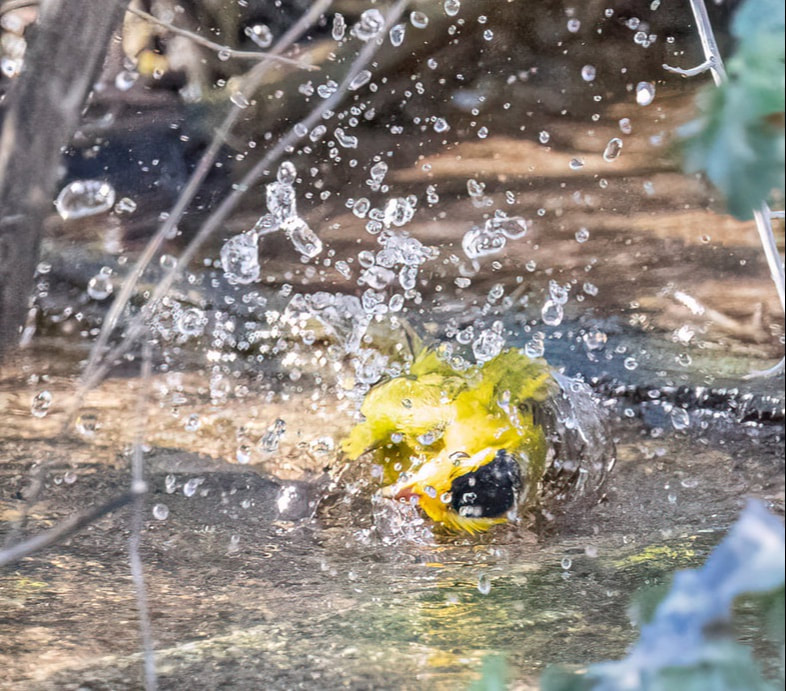
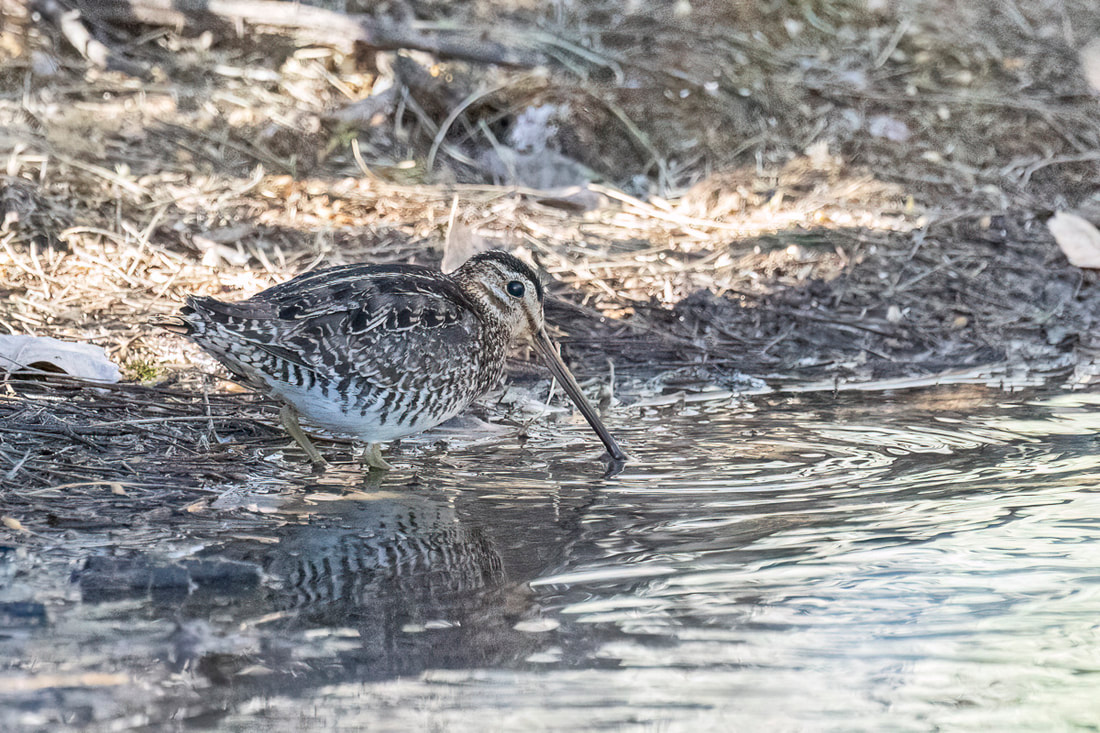
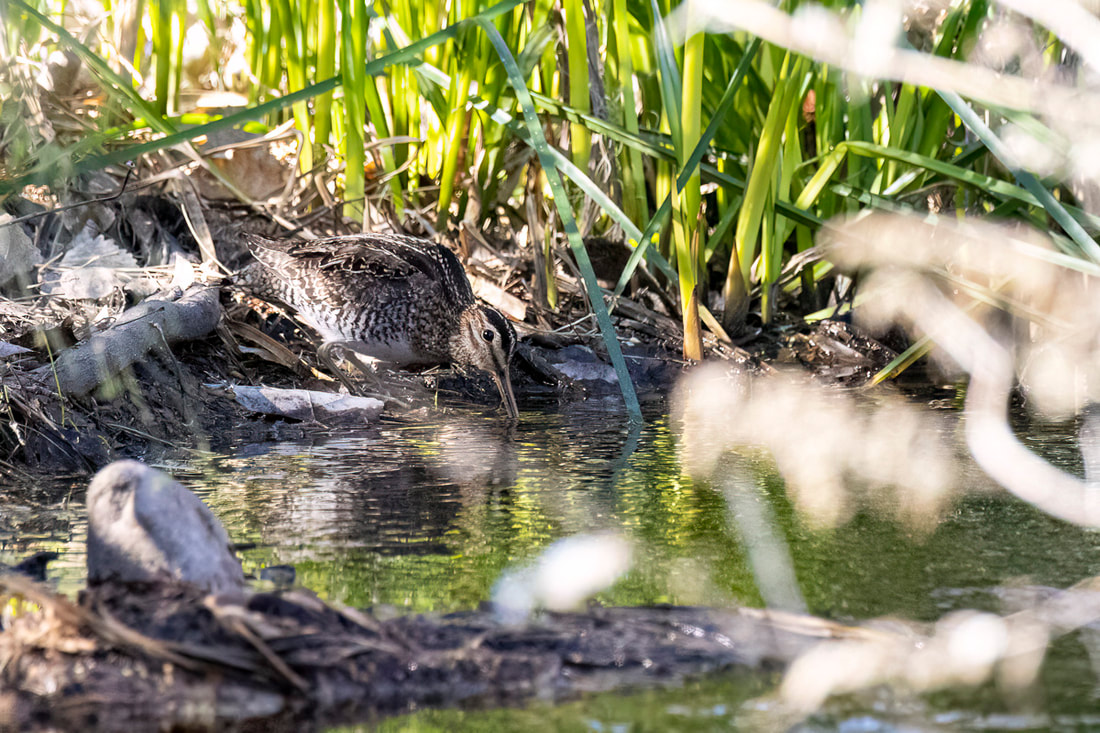

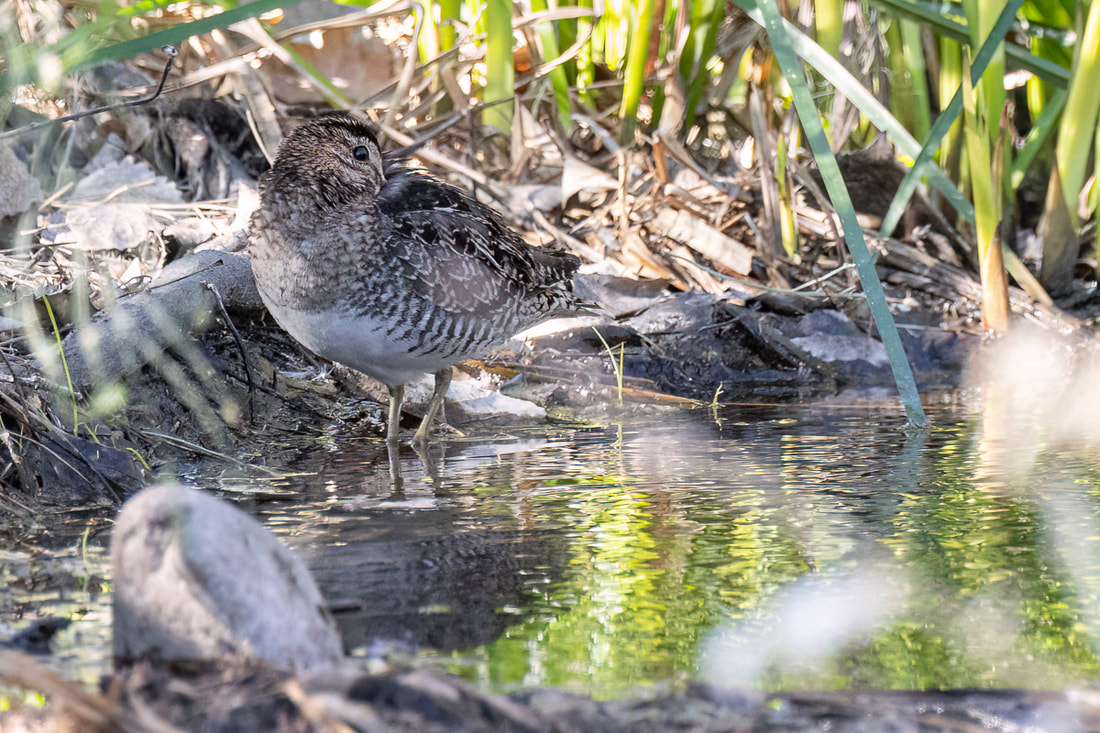
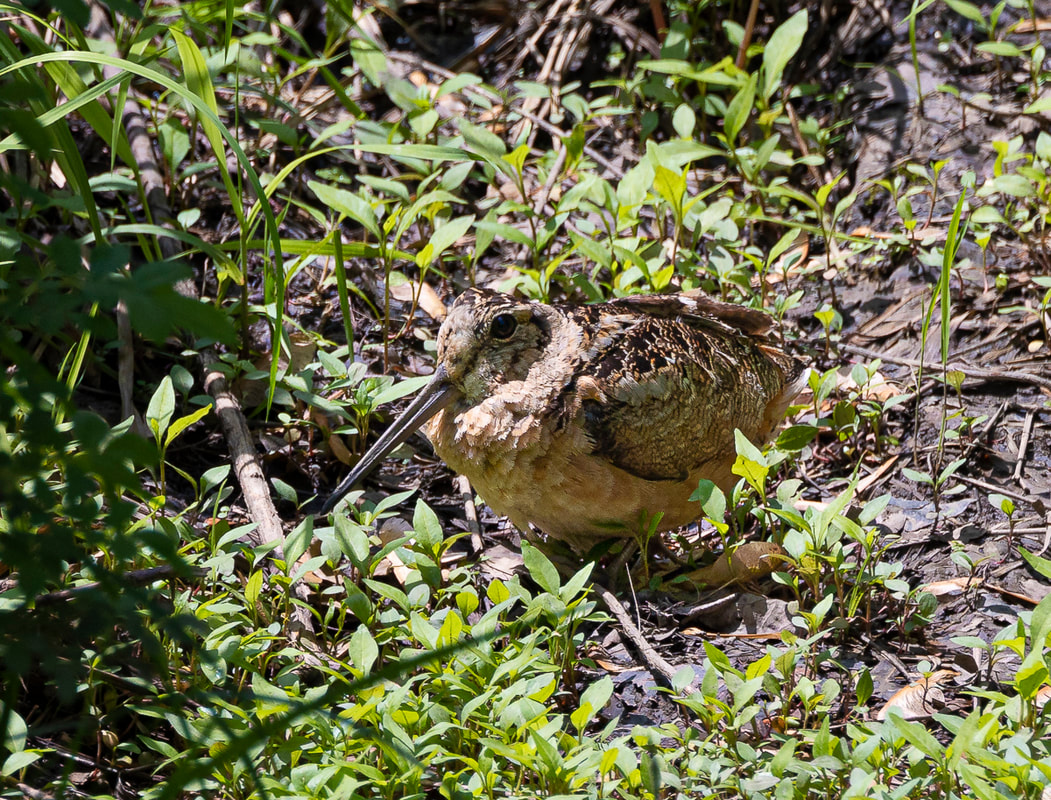
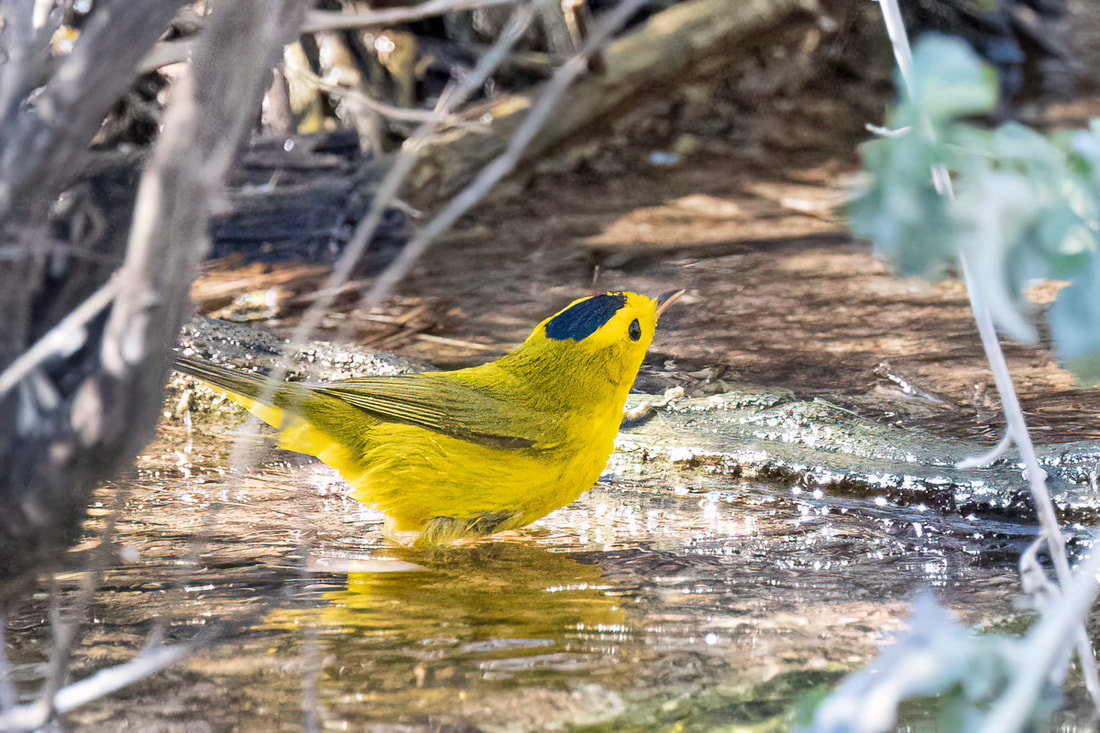
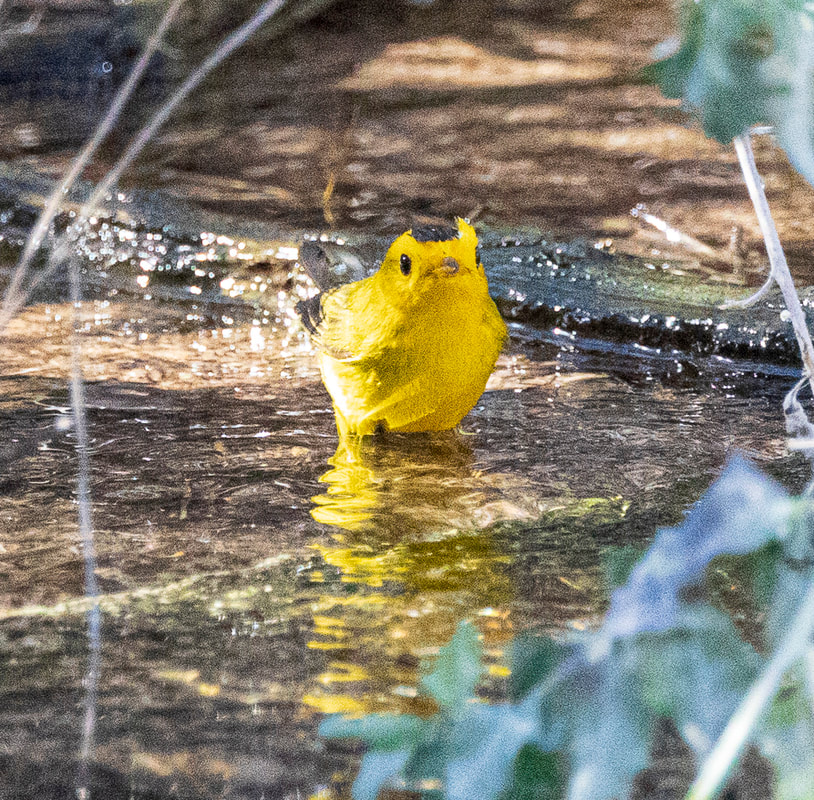
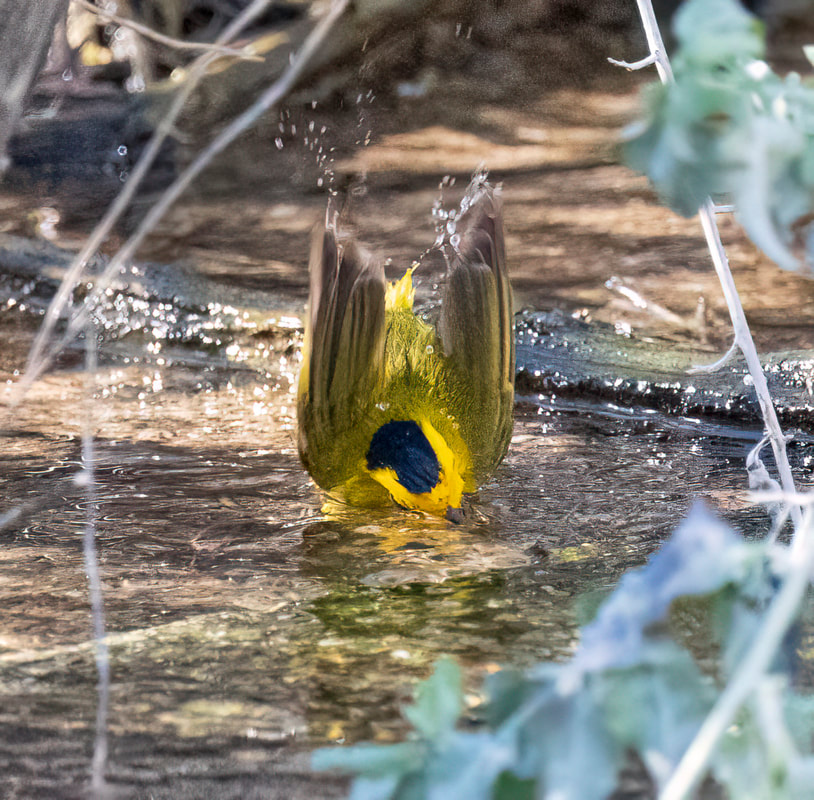
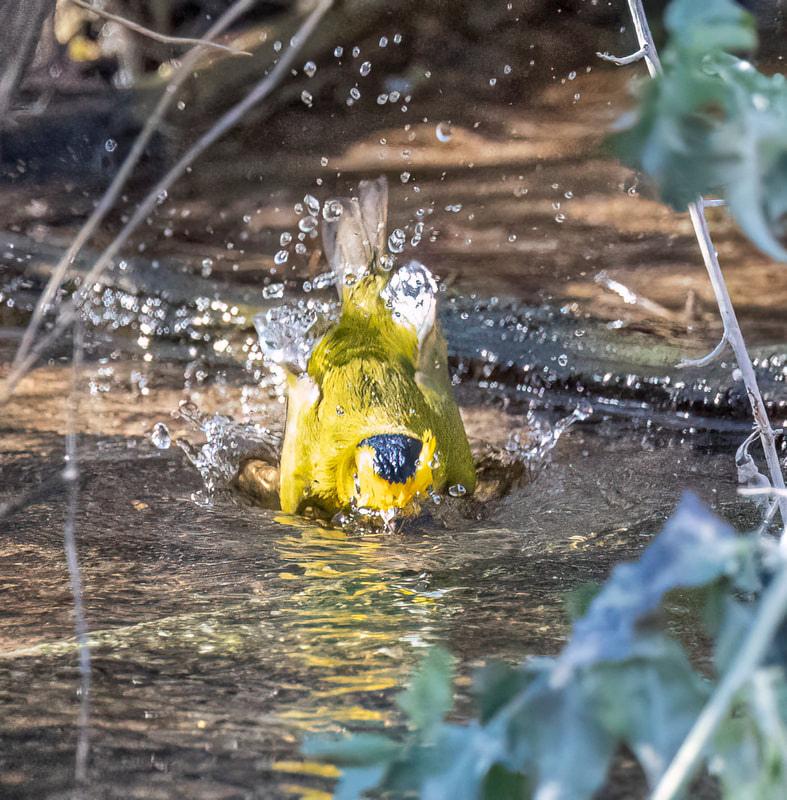
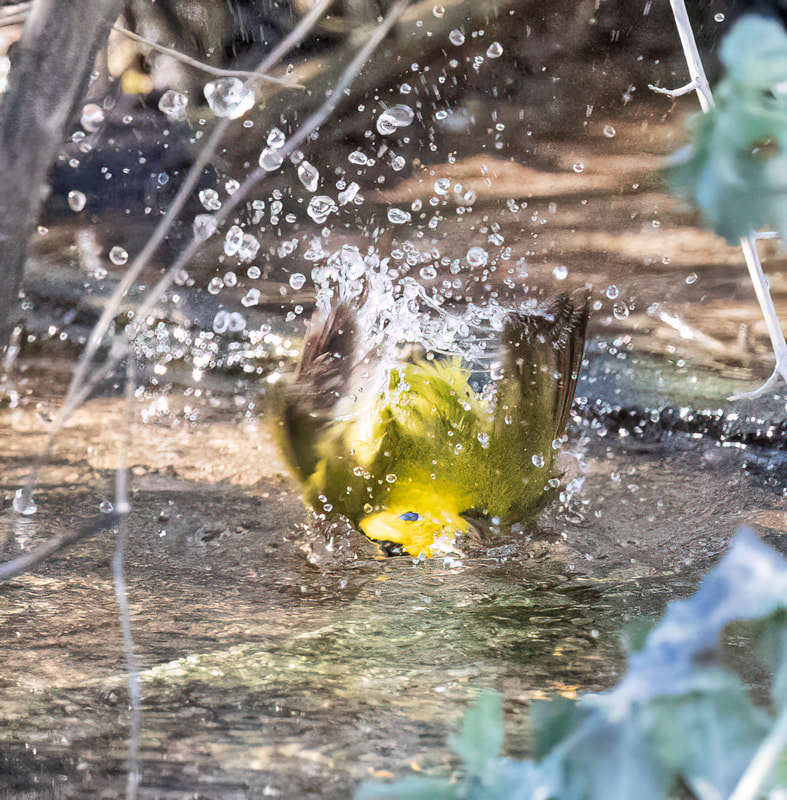

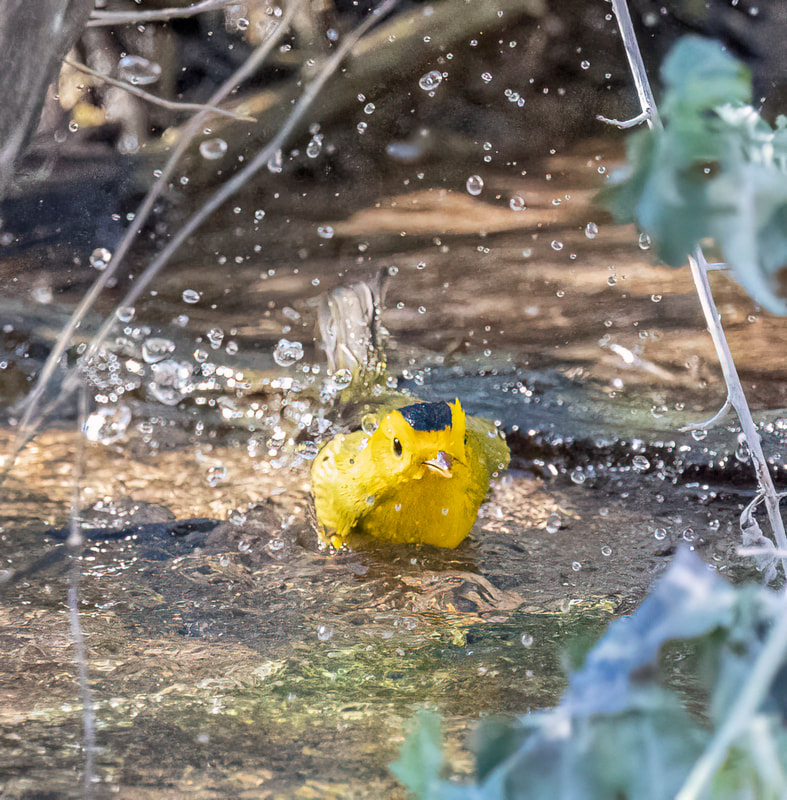
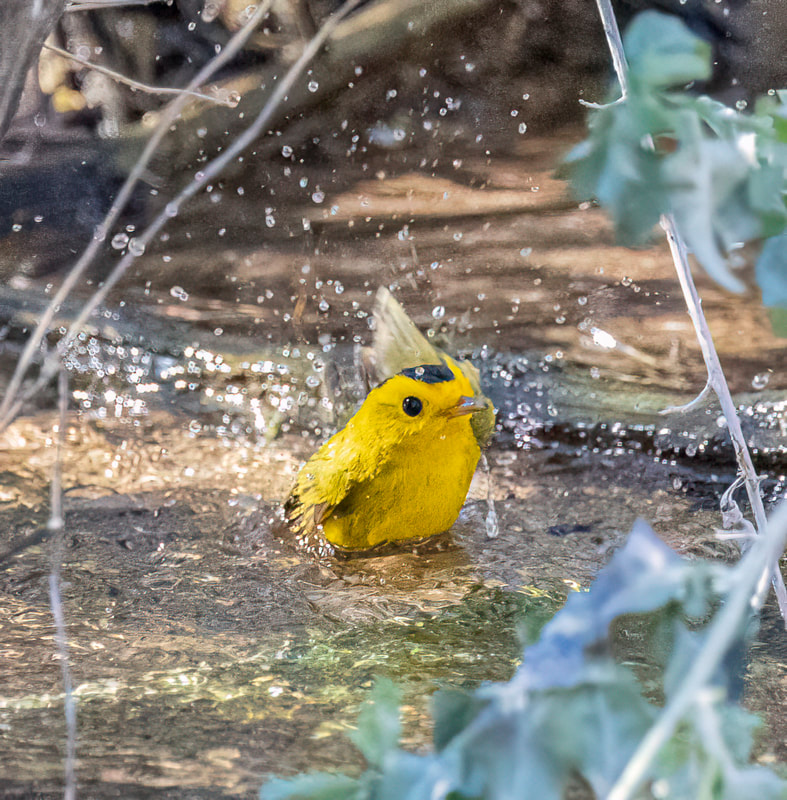

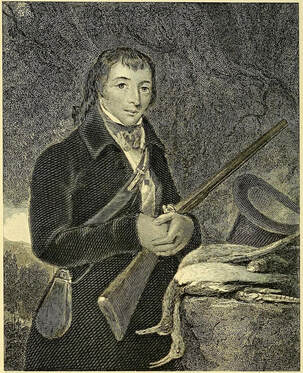
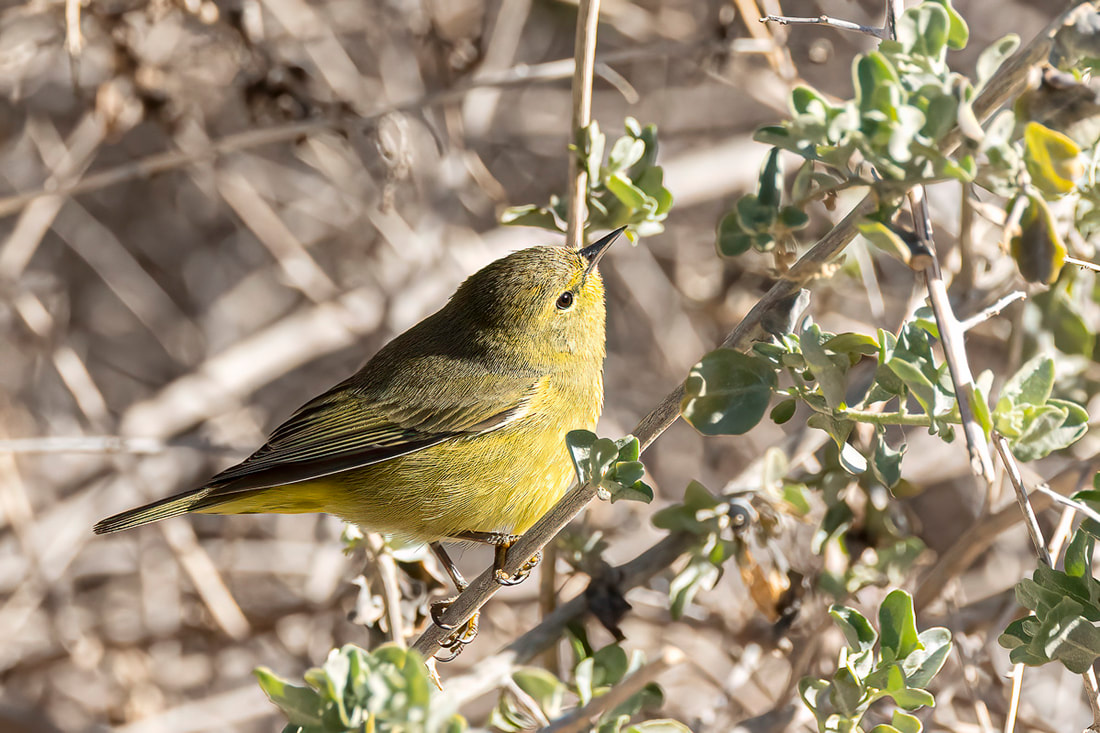
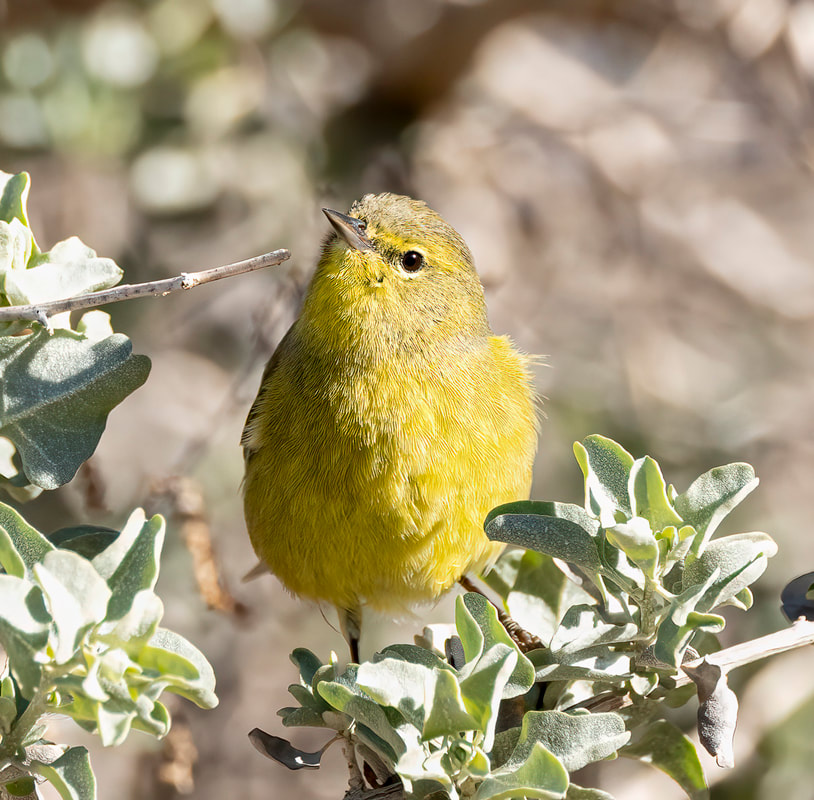
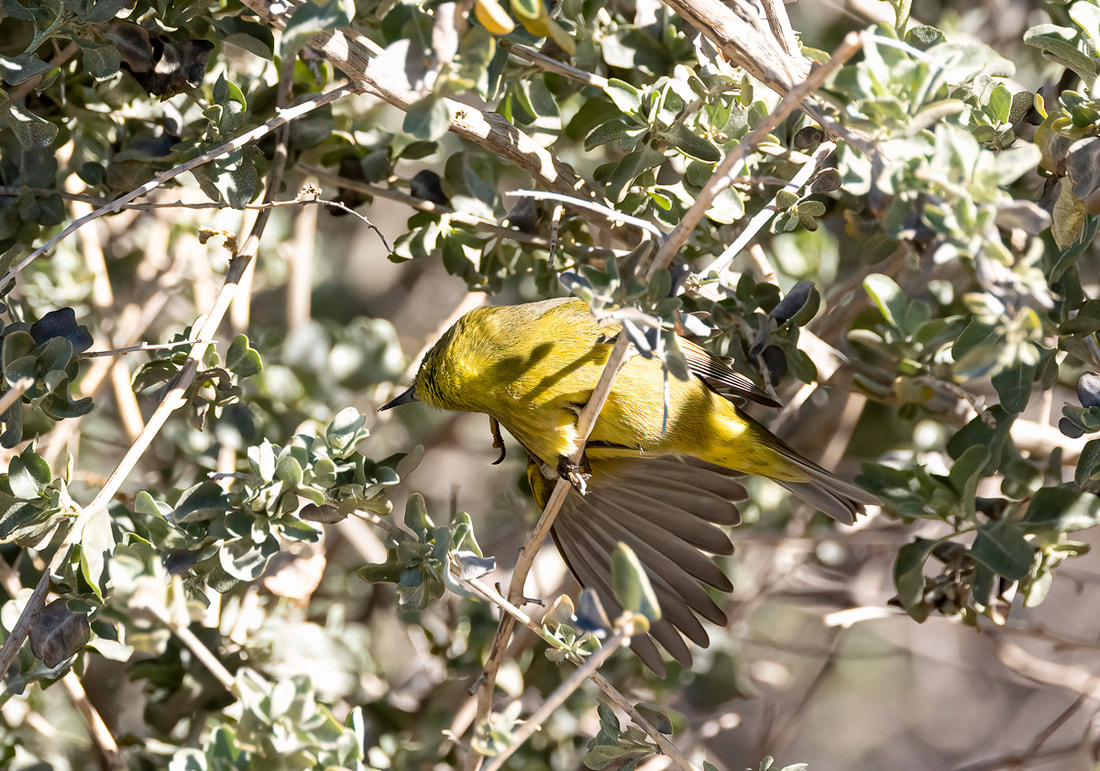
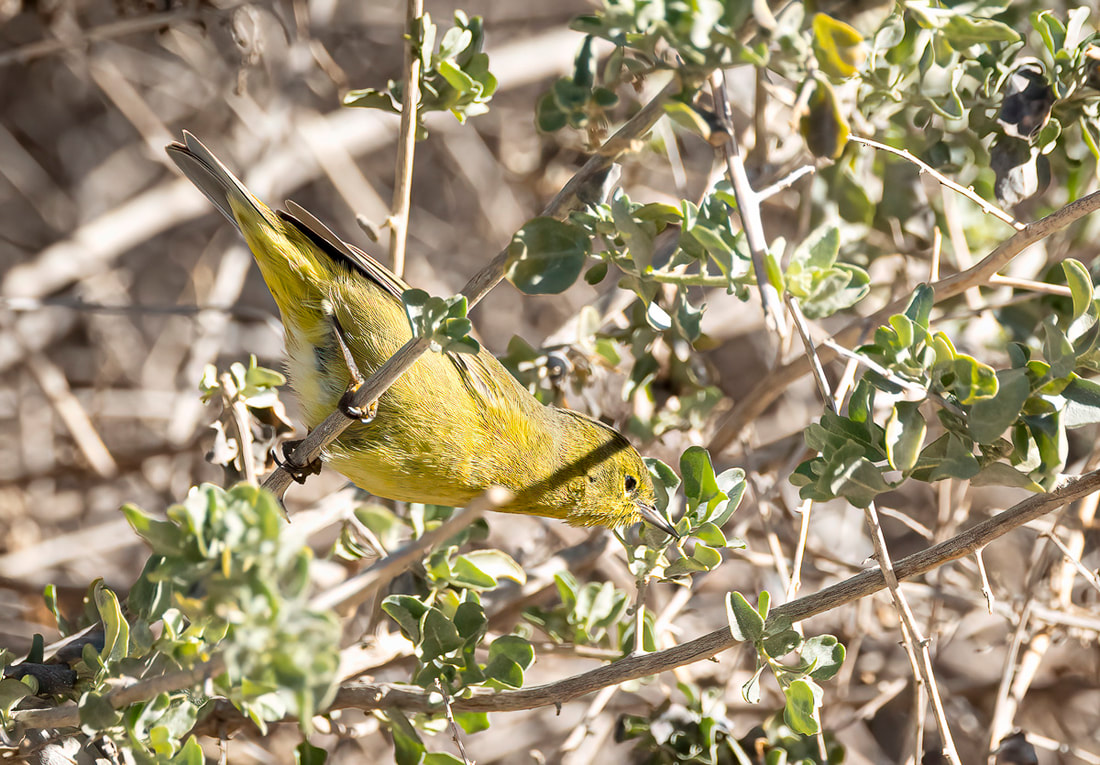
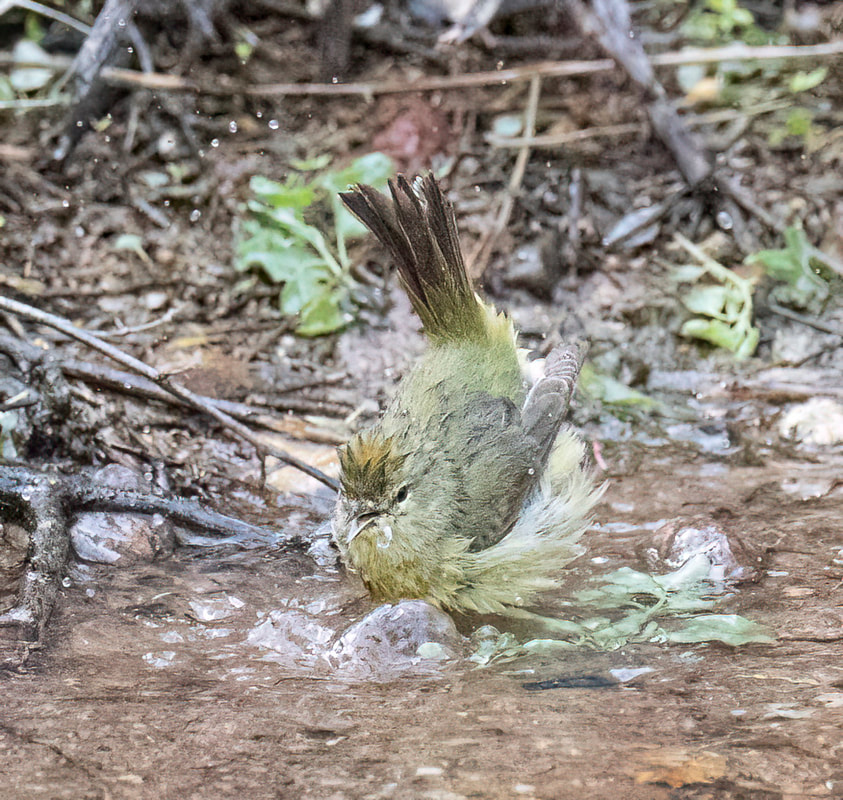
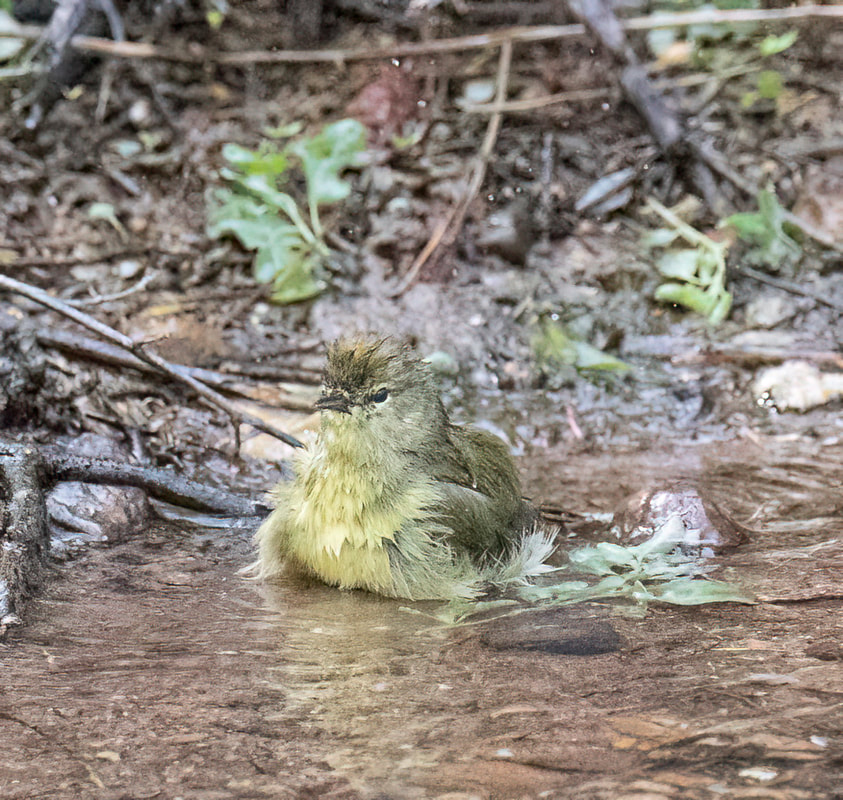

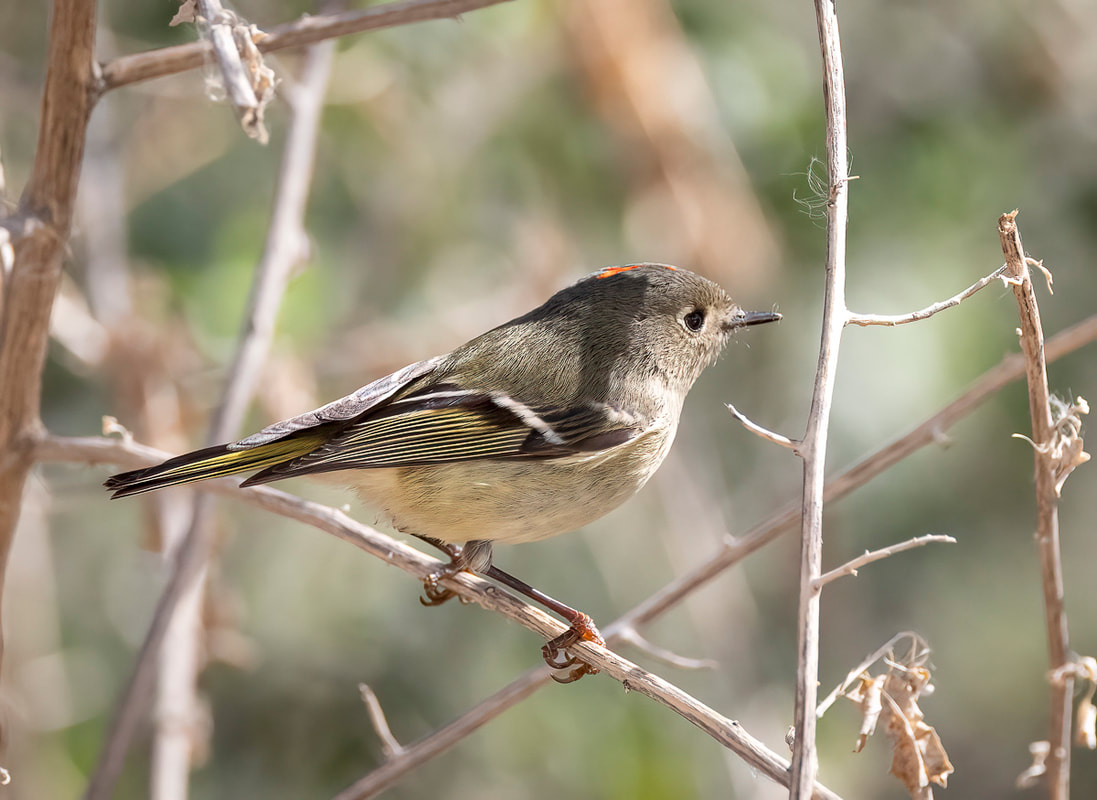
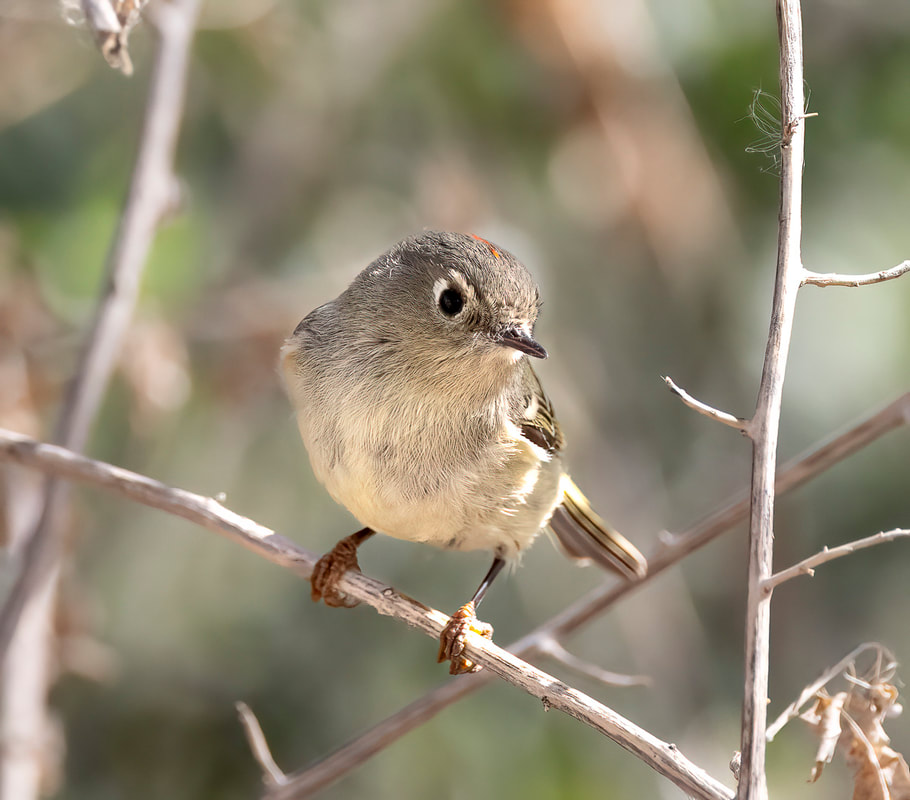
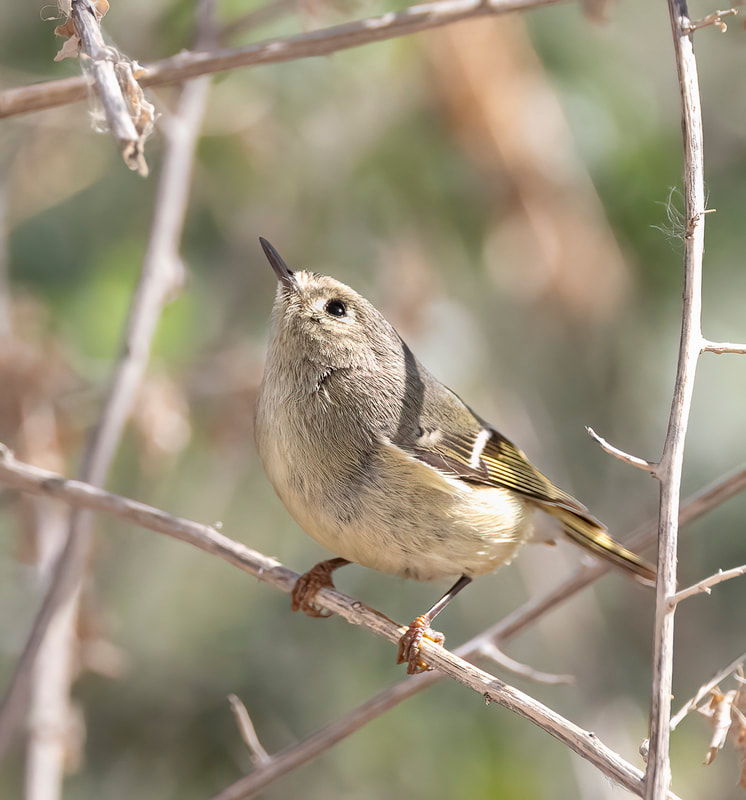
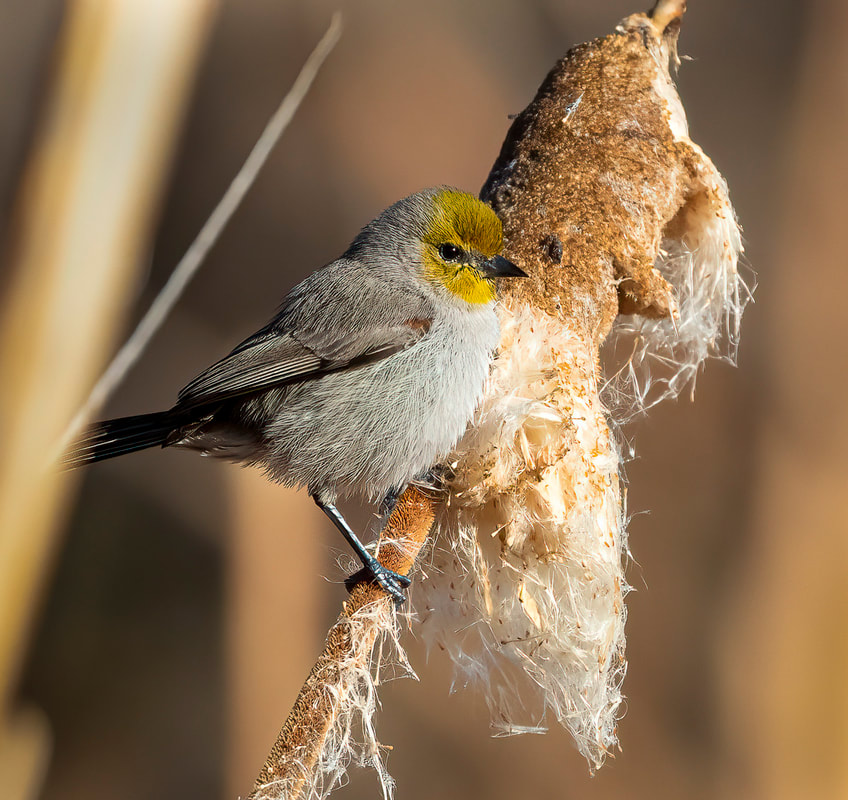
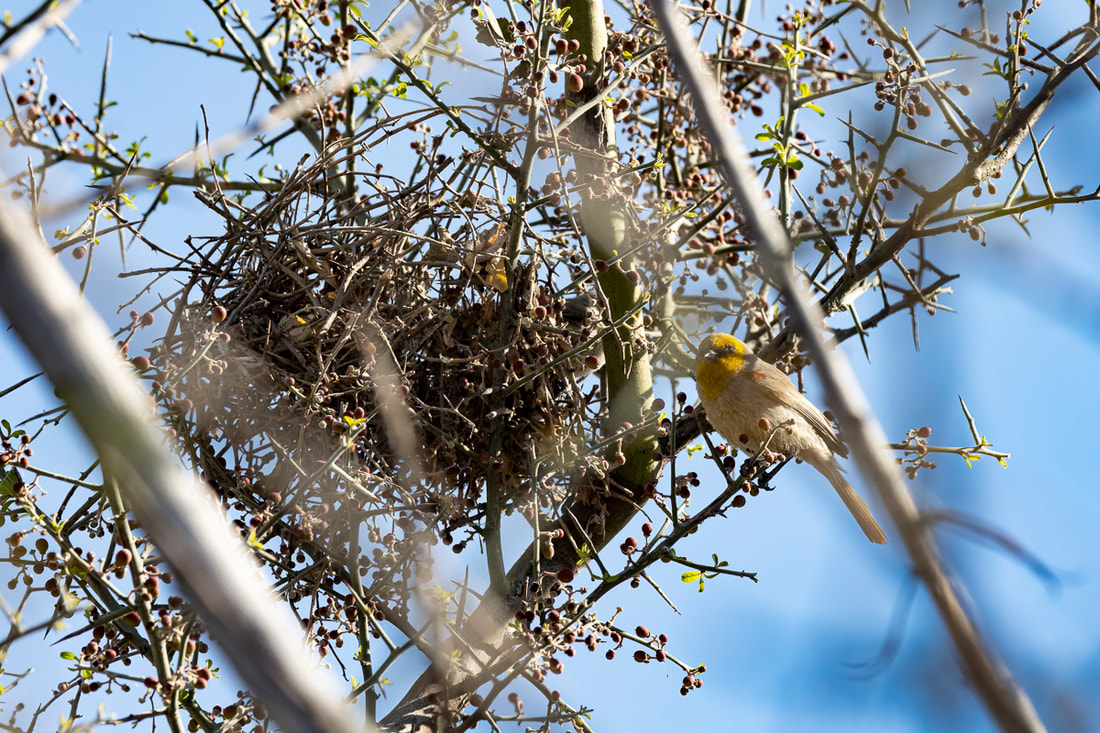
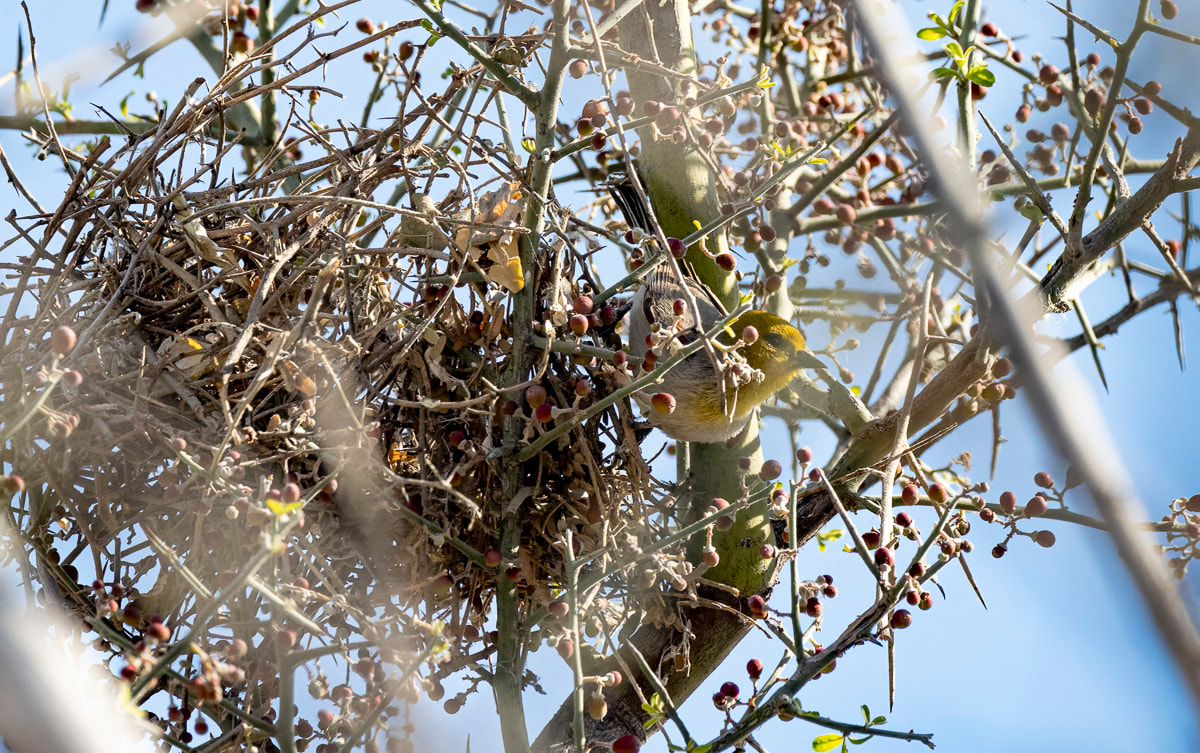
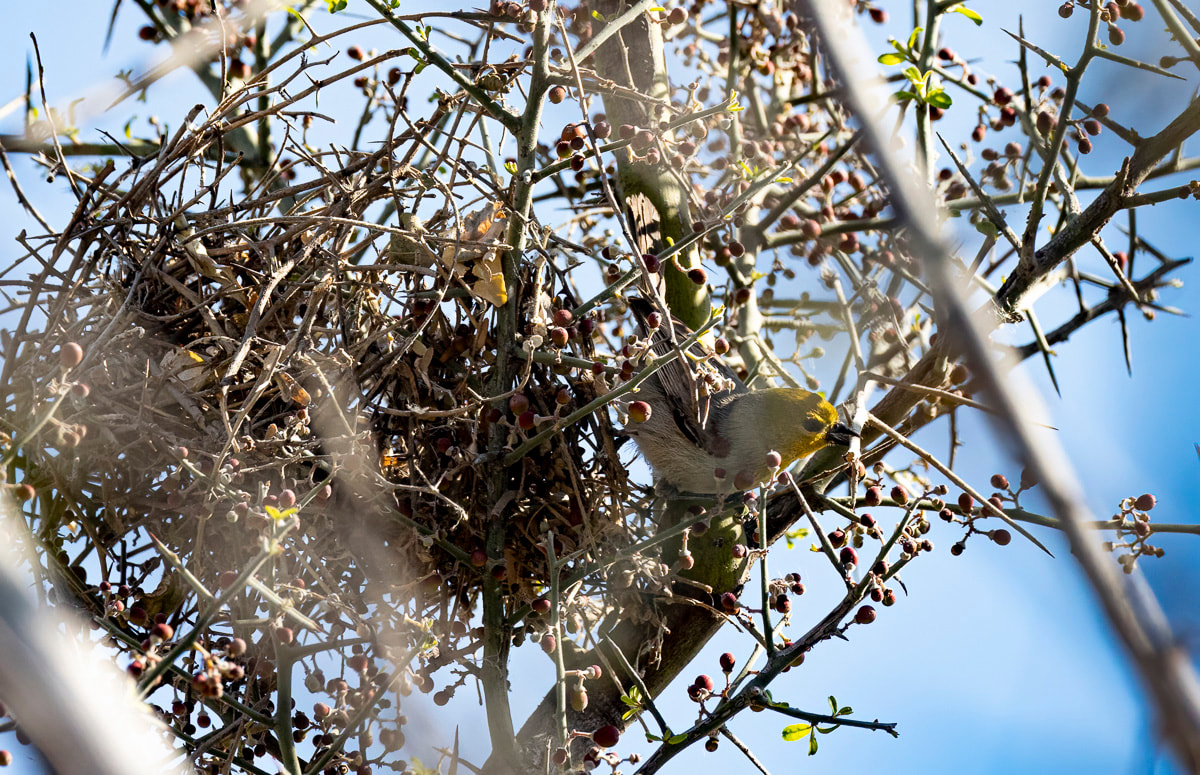
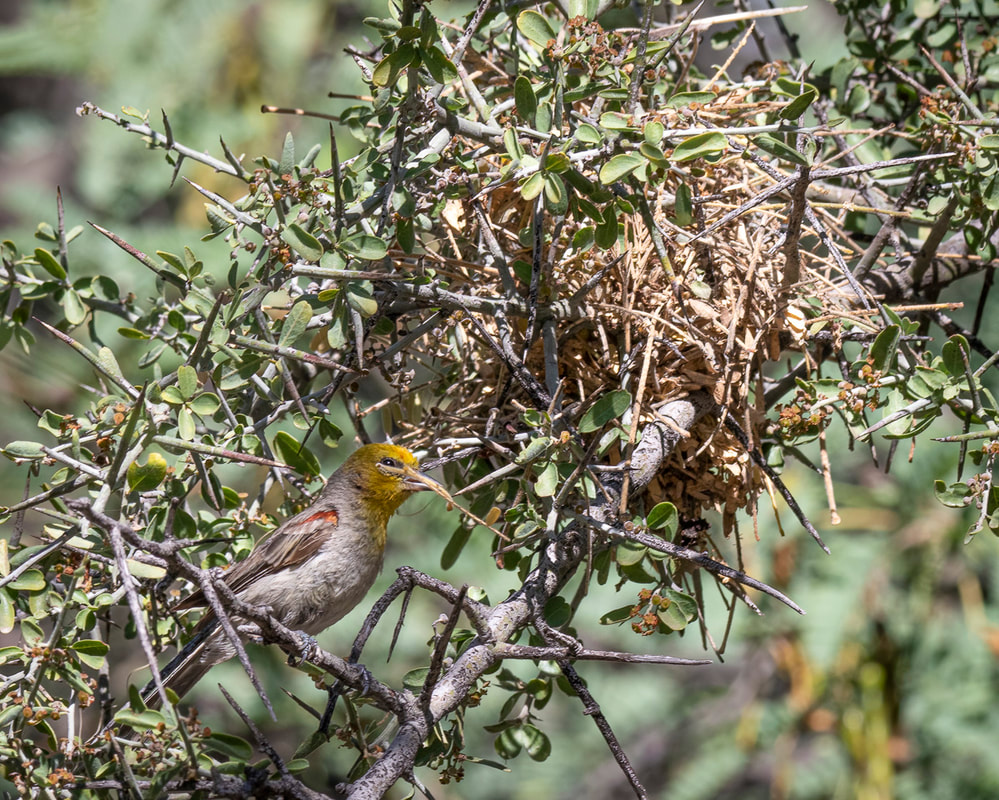
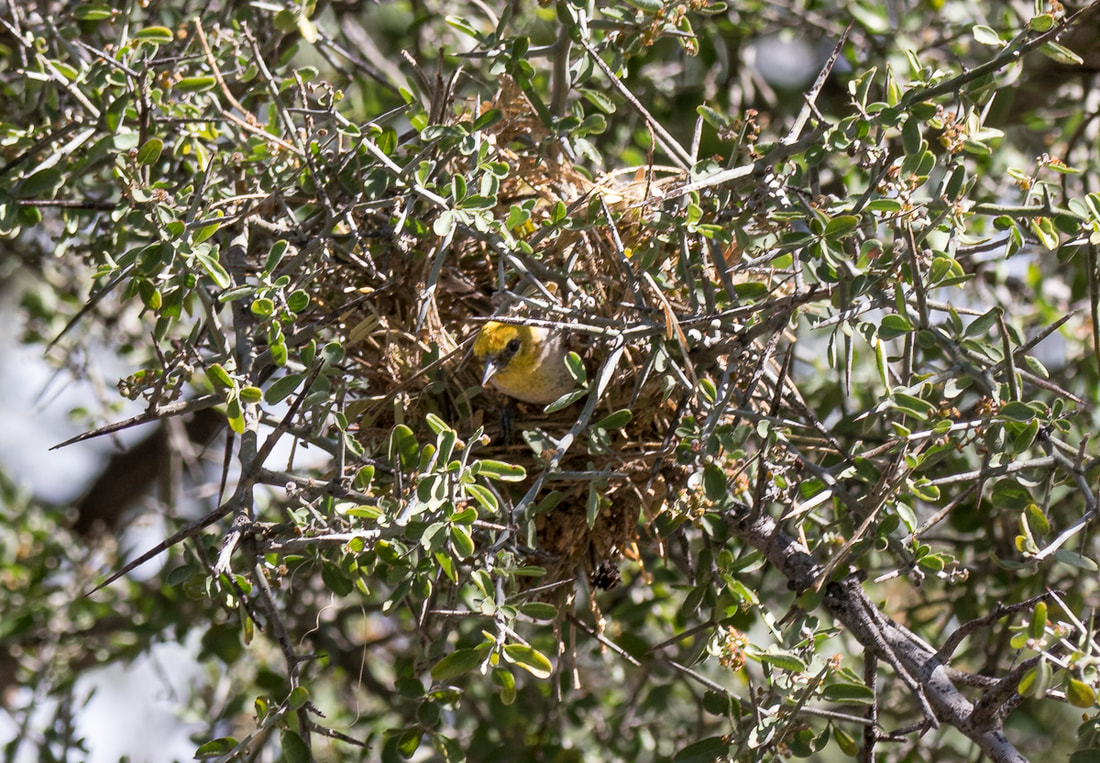
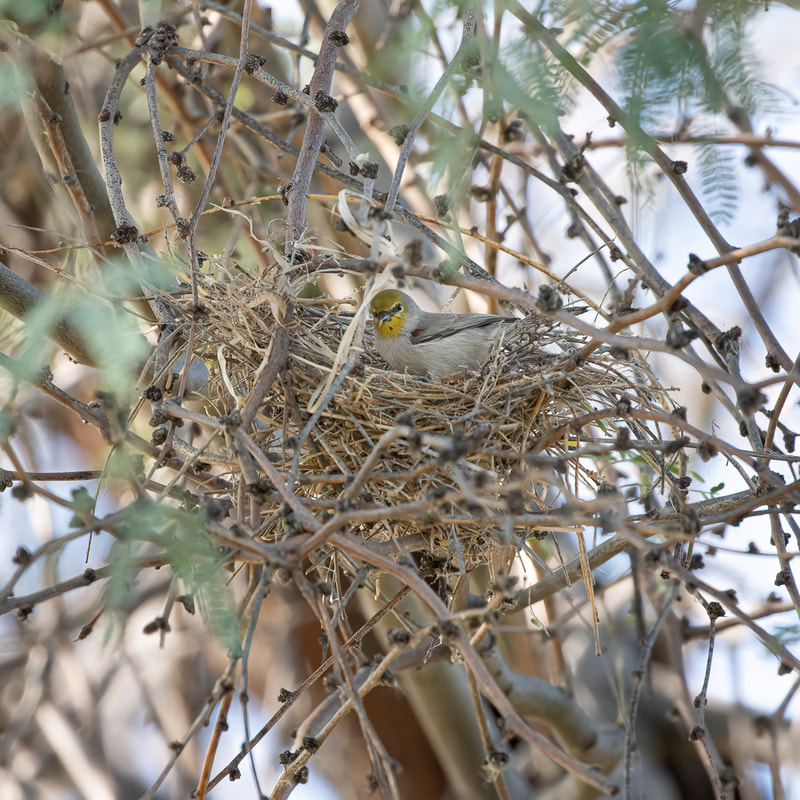
 RSS Feed
RSS Feed